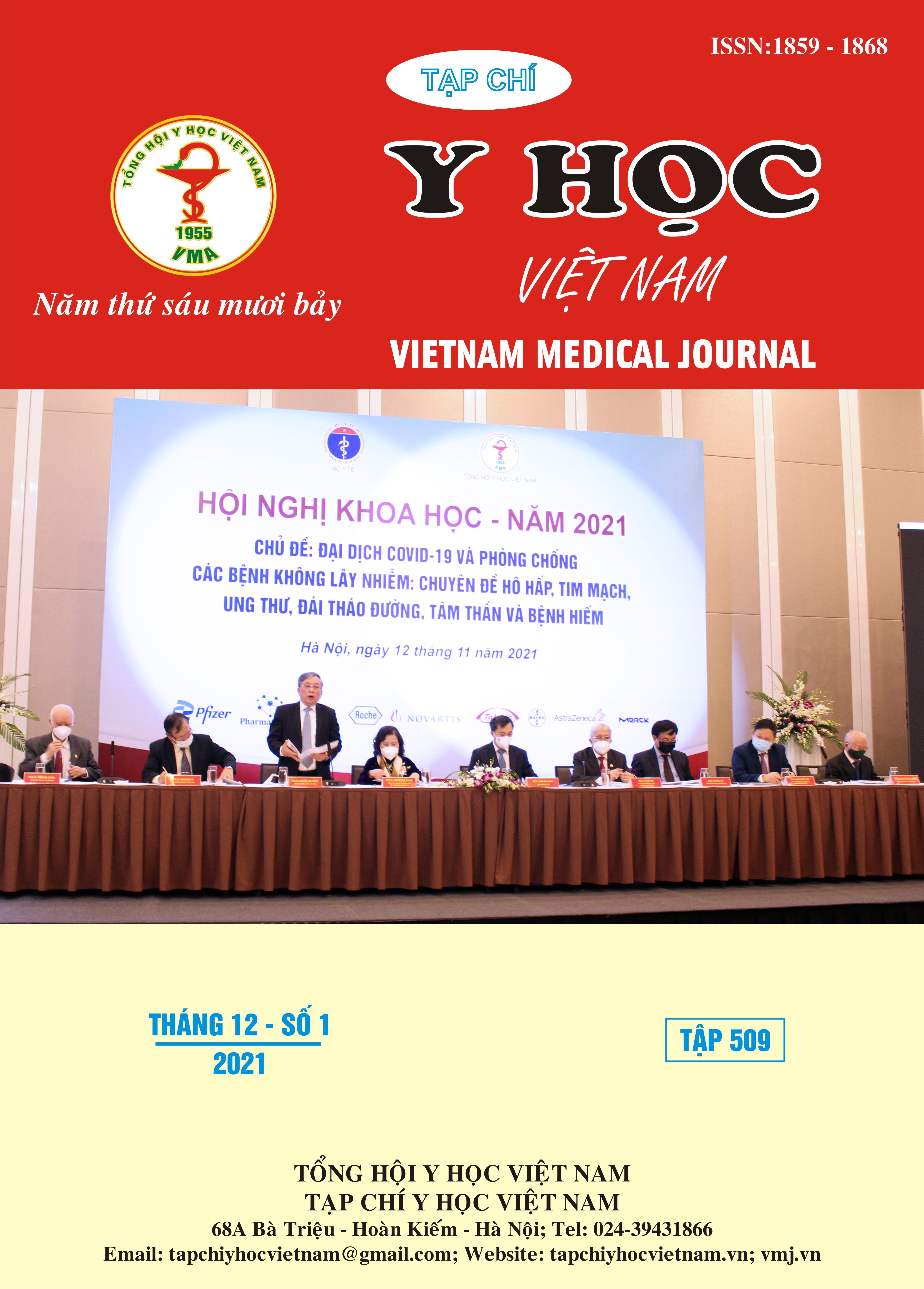CLINICAL FEATURES AND IMAGES OF PATIENTS WITH LARGE HEMISPHERIC INFARCTION WITH ENDOTRACHEAL INTUBATION
Main Article Content
Abstract
Background: Comments on clinical features and images of patients with large hemispheric infarction with endotracheal intubation. Method: Study of 31 patients with the intubation, were treated in Neurological Center of Bach Mai Hospital from August 2020 to July 2021. Result: The average age of patients was 70.32±11.37, the percentage of male was 67.7%, mortality rate was 41,9%. Frequent clinical symptoms onset included: paralysis (100%), language disorder (100%), consciousness disorder (90.3%), head-eye deviation (77.4%), urinary and fecal incontinence (74.2%). The mean of NIHSS score and Glasgow score at hospital admission was 21.81±3.53 and 11,87±1,15, resepectively. The intubation due to neurologic disorders accounted for 80.6%, the mean of Glasgow score in case of intubation was 9.10±1.35; 51.6% patients with abnormal pupil size and 35.5% patients with loss of light reflex when intubated. The ASPECT score at hospital admission was 4.39±1.15; average midline shift classification was 7.03±3.83 mm including 22.6% patients with midline shift classification level 3 (>10mm). 45.2% patients with hemorrhagic transformation. Conclusion: Large hemispherical infarction is a severe form of stroke with various clinical features and images and high mortality rate (41.9%)
Article Details
Keywords
Large hemispheric infaection, endotracheal intubation
References
2. Vũ Anh Nhị, Trần Thanh Hùng (2012), “Kiểm định các yếu tố tiên lượng đột quỵ cấp có đặt nội khí quản”, Tạp chí Y dược lâm sàng 108, 7 (số đặc biệt), tr. 267-270.
3. Berrouschot J, Rössler A, Köster J, Schneider D. Mechanical ventilation in patients with hemispheric ischemic stroke: Critical Care Medicine. 2000;28(8):2956-2961.
4. Nguyễn Hồng Quân, Nguyễn Văn Thông (2012), “Nghiên cứu đặc điểm lâm sàng và một số yếu tố tiên lượng bệnh nhân đột quỵ có đặt nội khí quản”, Tạp chí Y dược lâm sàng 108, số 7(Số đặc biệt), tr. 234 – 240.
5. Santoli F, De Jonghe B, Hayon J, et al. Mechanical ventilation in patients with acute ischemic stroke: survival and outcome at one year. Intensive Care Med. 2001;27(7):1141-1146.
6. Walcott BP, Miller JC, Kwon C-S, et al. Outcomes in Severe Middle Cerebral Artery Ischemic Stroke. Neurocrit Care. 2014;21(1):20-26.
7. Schielke E, Busch MA, Hildenhagen T, et al. Functional, cognitive and emotional long–term outcome of patients with ischemic stroke requiring mechanical ventilation. J Neurol. 2005;252(6):648-654.
8. Trần Thị Oanh (2018). Nghiên cứu đặc điểm lâm sàng, cận lâm sàng và một số yếu tố liên quan của bệnh nhân nhồi máu não cấp trên lều tiểu não có thông khí cơ học. :27.
9. Mayer SA, Copeland D, Bernardini GL, et al. Cost and Outcome of Mechanical Ventilation for Life-Threatening Stroke. Stroke. 2000;31(10): 2346-2353.


